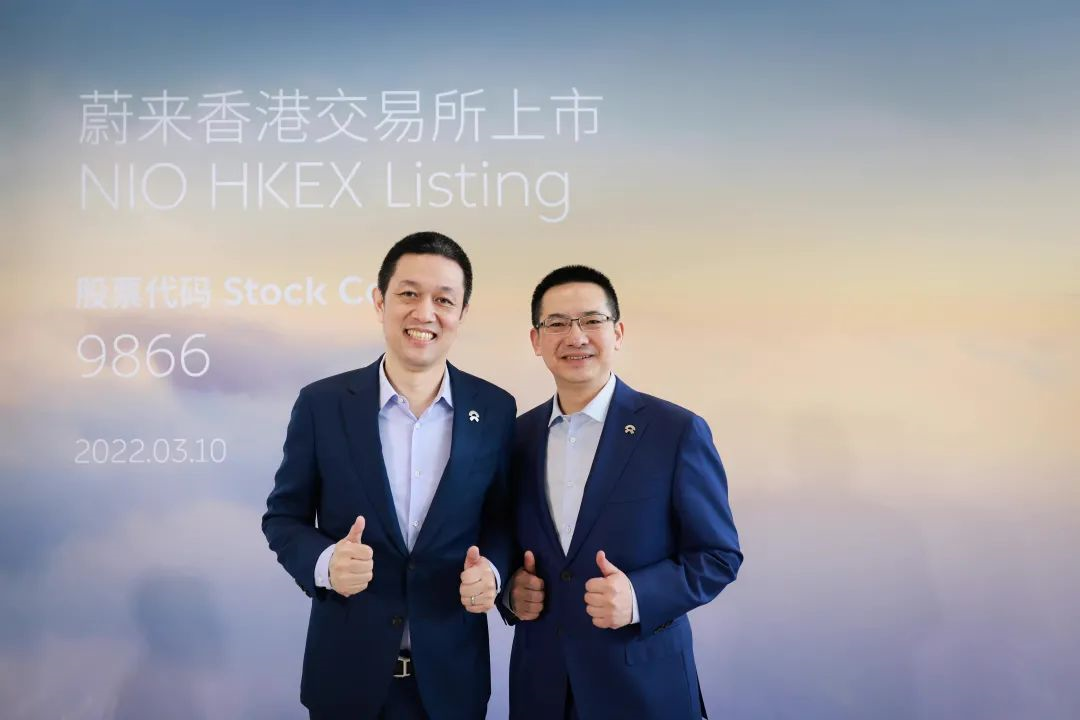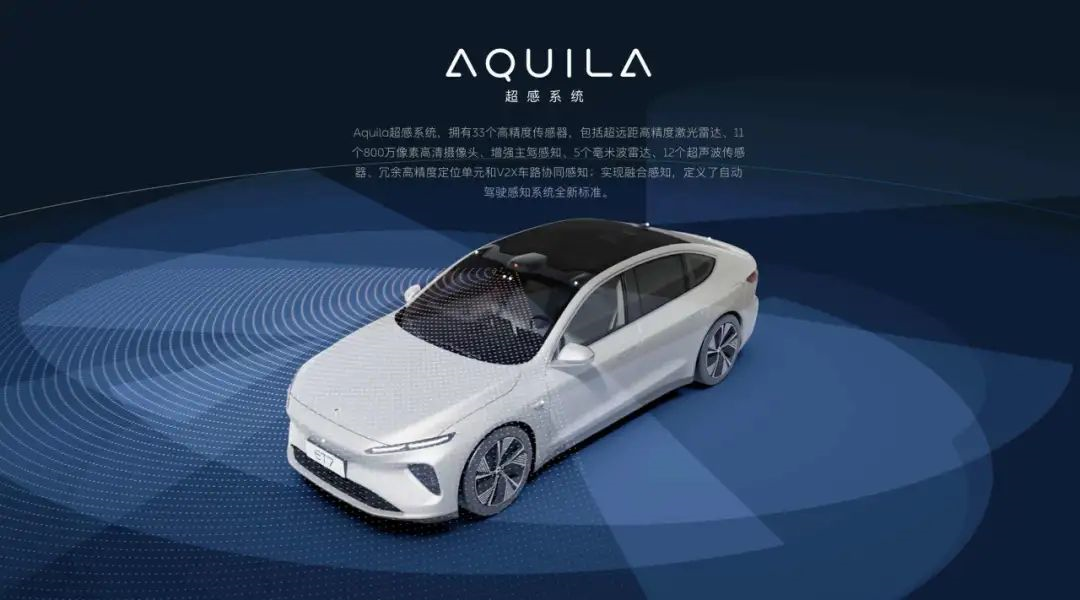Author: Michelin
In the automotive industry, people often hear sighs of missed opportunities around Tesla and NIO in 2019. At that time, NIO had just delivered 10,000 vehicles but encountered a large-scale recall event and production crisis, causing its stock price to plummet to $1. After surviving the darkest times, NIO seems to have ushered in its own glory in the past two years, leading the new forces in terms of stock price and sales volume, until…recent months, this “glory” has slowed down.

Recently, the February vehicle delivery volume of various car companies has been released, and NIO delivered a total of 6131 vehicles, while XPeng and Li Auto, also new forces, delivered 6225 vehicles and 8414 vehicles respectively. After giving up the throne of “leader of the new forces” to “Xiao Li Yue” in the second half of last year, NIO was surpassed by NETA this time and dropped out of the top three in new energy vehicle sales volume.
Along with the sales decline, a series of confusing strategies by NIO have also emerged, including:
Breaking the routine operation of releasing new cars at the end of the year on NIO Day in previous years, NIO exposed a new model ES7 two months after the release of ET5. Together with the current ES6 and ES8 on sale, ES7 may make the NIO SUV product line particularly crowded;
NIO’s stock price on the US stock market has dropped from $41 to $20, and it once fell to $17. Compared with the highest point last year, the market value has shrunk by two-thirds;
As smartphone manufacturers are entering the car-making industry, NIO is reportedly preparing to enter the smartphone business;
On March 10, NIO was officially listed on the Hong Kong stock market and chose the “introduction listing” mode without financing in order to be listed quickly;
….
These seemingly unrelated things seem to be a little unconventional, making it difficult for us not to ask: What’s going on with NIO recently?
Has NIO dropped out of the top three in the new forces?
On March 10th, NIO was listed on the Hong Kong stock market through the “introduction listing” mode and gave up the opportunity for financing.
This is not a very good timing: The Hong Kong stock market has been in a year-long freefall since last year, and recent geopolitical conflicts have created new lows. Chinese concept stocks listed in the US have also frequently heard news of being “forced to delist”; worse still, NIO’s recent order performance is not that ideal.
 The delivery volumes of various brands in February are out. By the end of the first two months of 2022, NIO delivered 15,783 cars, a year-on-year increase of 23.3%. In the meantime, Li Auto and XPeng delivered 20,682 and 19,147 cars respectively, and NIO was pushed out of the top three of the new EV manufacturers by NIO with 18,126 cumulative deliveries.
The delivery volumes of various brands in February are out. By the end of the first two months of 2022, NIO delivered 15,783 cars, a year-on-year increase of 23.3%. In the meantime, Li Auto and XPeng delivered 20,682 and 19,147 cars respectively, and NIO was pushed out of the top three of the new EV manufacturers by NIO with 18,126 cumulative deliveries.
We cannot simply evaluate a car company based on the delivery volumes of a few months, but we have to admit that delivery volume is the most intuitive indicator for both users and capital, and directly reflects user choice. As for NIO’s “lagging” issue, half of it can be said to be “expected,” and the other half is “unexpected” due to its own products.
Why is half of it “expected”?
Li Bin once responded to a question about sales with something along the lines of, “You can’t expect BBA to compete with Volkswagen and Toyota in terms of sales.”
Indeed, it’s unfair to compare sales figures for brands with different positioning, and NIO’s average selling price of over 400k has limited its market share. In the field of traditional cars, sales in the 400k-480k price range are almost only half of the 320k-400k range, not to mention the broad user group in the 200k+ range. From this perspective, when the new energy vehicle market gradually matures, NIO’s sales gap with Li Auto, XPeng, and Nio can be said to be an inevitable result, just a matter of time.
However, it seems that it’s not time yet. In the past few months, NIO’s delivery volume has not only failed to surpass its competitors, but has also not surpassed its own delivery record of consecutive months of more than ten thousand cars. In February, its year-on-year delivery volume growth was only 23.3%. So, the other half of the reason needs to be addressed.
Looking back at the top-selling new energy vehicles in the past year, almost every brand has one or two popular models to support sales. For example, Model 3/Y for Tesla, ONE for Li Auto, and P7 for XPeng, they contributed more than half, and even all of their orders on their own. For NIO, the three models, ES8, ES6, and EC6, are relatively evenly distributed, and the monthly order volume of the latest EC6 is not as good as that of ES6, which has been on the market for three years now.
For a car model, three years is not a long time, but for a smart EV, it is different.The rapidly developing intelligent and electric technology and iterative product configurations are driving the smart electric car forward. Just last year, everyone was cheering for getting the 8155 chips on board first, but when they returned after the New Year, the 8295 chips were already in position. In 2020, everyone was still discussing the possibility and cost of getting a LiDAR on board, but by the end of 2021, car companies had already started comparing the number of LiDARs they had.
Although the term “internal competition” has been used too many times, we have to say that today’s smart electric vehicles are really competitive, with too many products to choose from. It’s too difficult to keep a vehicle model competitive for three years.
That’s why almost every independent brand is trying to launch 1-2 new models a year to keep up with the pace of technology. However, in the past year or so, although NIO has launched the ET7 and ET5, it has not delivered any new models. Potential car owners either purchased other brands’ new products, or waited for the coming of the ET7 for two more months. Even loyal customers didn’t care about waiting for the ET7 any longer.
Perhaps after experiencing the bitterness of the “new car window period”, NIO started optimizing its production line and expanding its production capacity to meet the delivery pressure of new car models starting from the end of last year. At the same time, they also debuted the ES7 model, hoping to return to its peak through a more complete product matrix and new car models.
However, it can be foreseen that even with increasing delivery volumes, NIO’s next step is still not an easy one. The bigger the scale, the harder the road ahead. Why is that?
Looking back at every successful car brand, there is almost always a label to reflect its core competitiveness and brand value. For example, in the era of gasoline cars, the technical threshold was created by V8 engines and the ultimate driving experience. In the era of smart electric cars, this label is more diversified, such as ideal dad cars, XPeng’s intelligent vehicle technology, Tesla’s various polarization labels…
For NIO, this label is not on any specific model, but the entire brand’s services, which is NIO’s core competitiveness.
NIO’s investment in services without considering the cost helped it stand firm in the early stages, overcome the 2019 trough, and even take on the role of a new leader in the industry.Users choose to buy NIO because of the convenient battery swapping system, the “ripple effect” recommended by friends, the official second-hand car system, self-operated “Joy Drive” service, and NIO Service. These systems have improved NIO’s “soft power” and brand appeal, helping NIO establish a solid foundation.
As NIO’s production scale expands, the scale of these “soft power” systems is also expanding. By the third quarter of 2021, NIO had built four NIO Centers and 39 NIO Spaces. In terms of charging and battery swapping facilities, 217 battery swapping stations, 175 supercharging stations, and 159 destination charging stations were built in the third quarter.
For the auto industry, the cost of auto parts and production decreases with economies of scale, but the investment in services does not decrease with an increase in quantity and scale. Even when the user base rapidly expands, the workforce and resources necessary to ensure the same level of service will not simply increase in proportion but requires more resources.
In early 2020, NIO launched Service 2.0 and Insurance 2.0, replacing the original Service 1.0. The new version eliminated some resources that were overburdened, reduced services, and lowered the cost of subscribed services. At that time, NIO had just survived a difficult period, and the number of user deliveries began to increase. In 2021 and early 2022, these two services also made improvements in benefits and pricing.
With the delivery of ET7 and ET5, NIO’s service system will face new and greater pressures. Perhaps NIO needs to adjust not only NIO Service but also its “hard power.”
For a high-end auto enterprise, services are value-added elements and bonus points for the brand, but they are not the essence of the brand. It is similar to why we choose Haidilao for more considerate and thoughtful service. The prerequisite is that their hot pot tastes good.
We cannot compare hot pot with cars, as for consumers’ choices, the product strength of the car itself, which will be used for driving every day and may last for several years, is more important.
Therefore, at the recent NIO DAY, we saw that NIO seems to no longer emphasize only on “users”, but rather on research and development capabilities, systematic capabilities, and investment in research and development costs, which doubled year-on-year in 2021. They have invested in the Aspen 3.0.0 vehicle system, launched a 75kWh ternary lithium battery pack, researched a 150kWh solid-state battery pack, self-developed the autonomous driving system NAD, and the upcoming NT2.0 platform. Such research and development and technological investments promote the expansion of NIO’s product matrix.
Perhaps it was the experience of the “new car gap” of more than a year, and not long ago, NIO revealed the new model ES7. This new model not only shares the NT2.0 platform with ET7 and ET5, but also is positioned between ES6 and ES8. It may also be delivered within this year, with three new models delivered in a year.
While expanding its product matrix, how to avoid the “multi-generational” inbreeding of their own products, and how to avoid a series of supply chain problems such as chip shortages, battery shortages, and raw material price increases, have also become the challenges that NIO needs to face while improving its “hard power”.

Finally
Compared with the “darkest moment” of 2019, the current decline in sales and fluctuations in stock prices only bring minor troubles, seemingly without causing a major crisis. However, compared with that time, the storms in the smart electric vehicle market are much greater today. Brand competition, product inbreeding, the emergence of new brands, and the efforts of traditional car companies in smart electric vehicles all make it harder to crack the bones of today’s industry.
We cannot run a marathon like a 100-meter sprint, and a car company cannot complete the entire smart car race with an initial start-up posture.
Perhaps it is time for NIO to adjust its strategy, find a balance between its products and services, and find a new story that belongs to NIO in order to gracefully face NIO’s lengthy and intense competition.
This article is a translation by ChatGPT of a Chinese report from 42HOW. If you have any questions about it, please email bd@42how.com.
